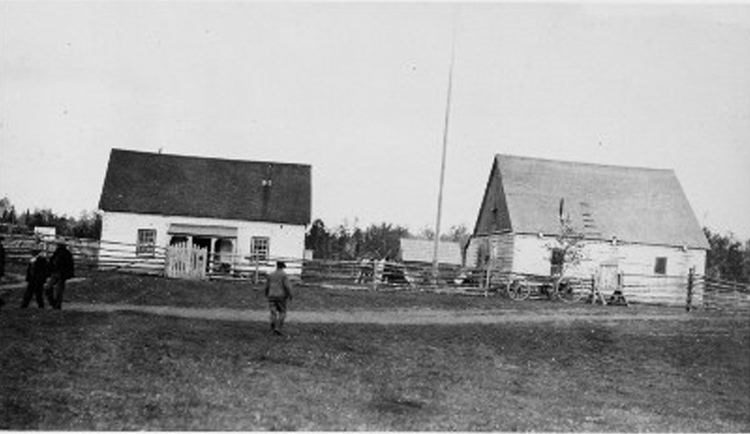This week in Prince George history, July 24-30:
July 28, 1932: A local doctor received an urgent call for help from McDame's Creek on July 25, 1932 to help a miner injured in an explosion, The Citizen reported.
"Dr. H.J. Hocking, who operates a licenced amateur short-wave radio, picked up an urgent call from McDame's Creek in the Cassier, calling for assistance for a miner named Crawford, who had been caught in a premature blast and severely burned about the head and cut," The Citizen reported. "The mining syndicate, operating in the vicinity of McDame's Creek, took in a short-wave radio set, and an operator from Victoria who knew Dr. Hocking was the nearest point his light set could hope to reach."
Crawford was injured on July 23, and given first aid by a missionary at McDame's Creek. The radio operator from the mine spent two days trying to raise Hocking on the radio before succeeding.
"Dr. Hocking put the call for assistance on the Canadian National wire, and it as forwarded to Seattle, from which point arrangements were made with the Canadian Airways to dispatch a plane in from Carcross," The Citizen reported. "On Tuesday night (July 26) the radio broadcast the news the relief plane had hopped off for McDame's Creek, but there must have been some slipup in the arrangements as late on Wednesday morning the plane had not made an appearance at its destination."
Dr. Hocking had kept in touch with the radio operator, who told him that he'd not been able to make contact with anyone else.
(ITALIC) McDame's Creek, also known as McDame, McDame Post or Fort McDame, is located not far from Yukon border almost 1,120 km away by road. The site was prospected by Harry McDame and John Giscome - Giscome Portage, where Huble Homestead is located, is named after John Giscome - and has been a ghost town since being abandoned in 1960.
But if there are any ghosts at McDame Creek, Frank Crawford isn't one of them. The Aug. 4, 1932 Citizen reported that he was successfully evacuated to Whitehorse by pilot Stanley McMillan of Canadian Airways and was expected to recover.
Crawford owed his timely rescue to McDame radio operator George H. Latham and Dr. Hocking, who provided instructions to treat Crawford over the radio until the plane arrived. (END ITALIC)
July 29, 1943: James Edward Armstrong, the last agent of the historic Hudson's Bay Fort George fur trading post, died on July 23, 1943, The Citizen reported.
Armstrong died at the age of 68 at the North Vancouver General Hospital and was buried on July 26 in North Vancouver.
Armstrong was the agent of Fort George from 1911 until it closed in 1914, The Citizen reported.
"The post was built in 1807 by the Northwest Fur Co., which later joined with the Hudson's Bay Co.," The Citizen reported. "The post was located at the mouth of the Hudson's Bay slough overlooking the Fraser River near the present golf course. Only part of the buildings remain, fire having destroyed the residence."
Russell Walker, who was an early land salesman in the Fort George district, recalled that Armstrong was, "a very fine gentleman."
"Mr. Armstrong represented the first change over from the typical old Scottish factor (agent) to the modern Hudson's Bay Co. store manager - a strictly modern businessmen," Walker said. "He was a man of a very pleasing and kindly personality, reticent but met everybody with a gracious smile and the business courtesy so common to the long line of famous factors of this original trading company.
"As I recall, he was tall, slender and slightly stooped."
Armstrong was survived by his wife, brother and daughter in North Vancouver and a son in Saskatchewan.
(ITALIC) Mr. Armstrong presided over an important part of Canadian history. Fort George was established in 1807 by Simon Fraser of the North West Company - making it the fourth-oldest permanent European settlement west of the Rockies after forts in McLeod Lake (1805), Fort Fraser (1806) and Fort St. James (1806).
Fort George would also serve as Fraser's base camp for his 1808 expedition to the mouth of the river that would bear his name.
Fraser and his expedition of 24 men left Fort George on May 28, 1808 and reached the Straight of Georgia on July 2. After suffering numerous hardships - running rapids, grueling portages, being chased upstream by warriors from the Musqueam and Kwantalen First Nations and quelling a near-mutiny among his men - Fraser's expedition returned to Fort George on Aug. 6, 1808. (END ITALIC)
To explore 100 years of local history yourself, visit the Prince George Citizen archives online at: pgc.cc/PGCarchive. The Prince George Citizen online archives are maintained by the Prince George Public Library.



